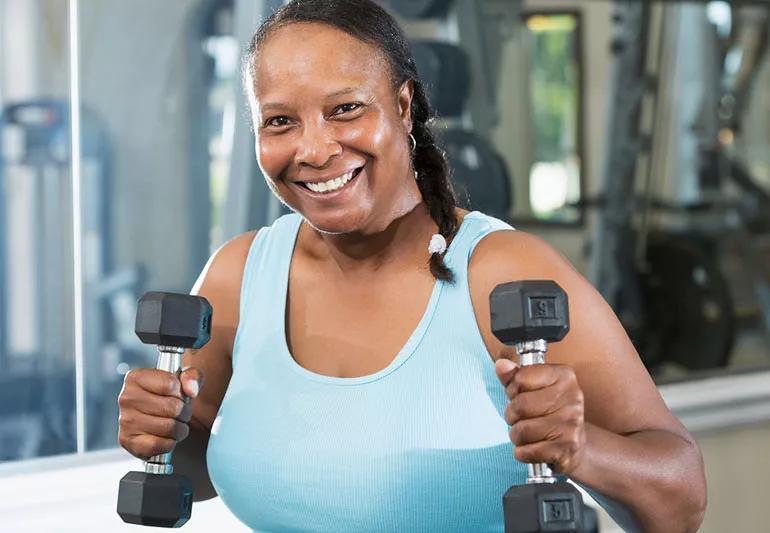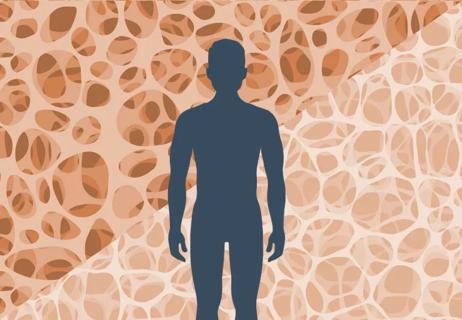The right exercises can protect you from future fractures

Your bones are living tissues that are constantly breaking down and rebuilding. And diseases that change bone architecture, such as osteoporosis, spell trouble.
Advertisement
Cleveland Clinic is a non-profit academic medical center. Advertising on our site helps support our mission. We do not endorse non-Cleveland Clinic products or services. Policy
“Osteoporosis happens because the cells that break down bone are more active than those that are in charge of building bone, putting you at risk for fracture” explains orthopaedic physical therapist Jennifer Danzo. “Osteoporosis is a major health concern. Half of all women and one-quarter of all men over age 50 will have a fracture caused by osteoporosis in their lifetime.”
Fortunately, exercise done properly can help to rebuild bone and reduce the likelihood of fracture, says Danzo. Here are her recommendations if you have osteoporosis and haven’t had a bone fracture.
In order to notice changes in bone density, cardiovascular workouts should involve weight-bearing. Swimming and biking aren’t weight-bearing, so walking, jogging and dancing are more effective, she says. It’s also important to dial up your exercise intensity while you’re working out.
To see improvements in bone density, it’s a good idea to “surprise” your bones when you are out for a walk. You can do this by speeding up your pace, changing directions (try going backward or sideways!) or finding a hill or two to navigate. Alternating higher-intensity exercises two to three days a week with lower-intensity activities four to five days a week is most effective.
Advertisement
Work with free weights, use weight machines at the gym or do floor exercises to gain strength. “Recent studies have confirmed that it’s important to lift enough weight to stimulate bone growth,” Danzo says. “Because of this, you will need to do fewer reps with heavier weights.”

Lengthening tight muscles will reduce back pain, and promote good spinal mechanics and posture. Muscles that are commonly tight include those you use to:
Danzo says you should perform stretches slowly and smoothly, “to a point of stretch, not pain.” For maximum benefit, do stretches once or twice a day and hold for 20 to 30 seconds.
You might have wondered if yoga or Pilates (core-strengthening) classes would be safe to do if you’ve got osteoporosis.
Danzo advises caution: “Yoga and Pilates are helpful for stretching and lengthening, but include many flexion-based (forward bending) poses.” If you are interested, she advises being careful and working with knowledgeable yoga and Pilates instructors. And let them know you have osteoporosis.
Exercises that keep your spine in a straight or slightly arched position are generally safer than exercises that involve bending forward. That’s because most spine fractures occur in a flexion-based (forward bending) position, says Danzo.
If you’ve already had an osteoporotic fracture, avoid exercises that involve forward bending, side bending and rotating the trunk. Proper strengthening of your lower abdominal and back muscles will also help to attain the optimal spinal position.
Advertisement
Fortunately, you can develop a safe, effective personal exercise program — even if you’ve had a fracture, she says. Ask your doctor whether a referral to a physical therapist might be worthwhile.
Advertisement
Learn more about our editorial process.
Advertisement

Some osteoporosis medications help slow bone breakdown, while others help grow new bone — what’s best for you depends on your needs

It’s best to aim for calcium-rich foods instead of turning to supplements

Diseases, other factors can increase men's risk

Low-intensity interval training, or LIIT, offers numerous benefits and less wear and tear

Weightlifting and other types of resistance training bring many health benefits

Plus, ways to keep your bones healthy and strong!

Bone health starts with proper nutrition, exercise and healthy lifestyle choices

In general, you want to take this ‘sunshine vitamin’ with a meal or snack that contains healthy fats

If you’re feeling short of breath, sleep can be tough — propping yourself up or sleeping on your side may help

If you fear the unknown or find yourself needing reassurance often, you may identify with this attachment style

If you’re looking to boost your gut health, it’s better to get fiber from whole foods